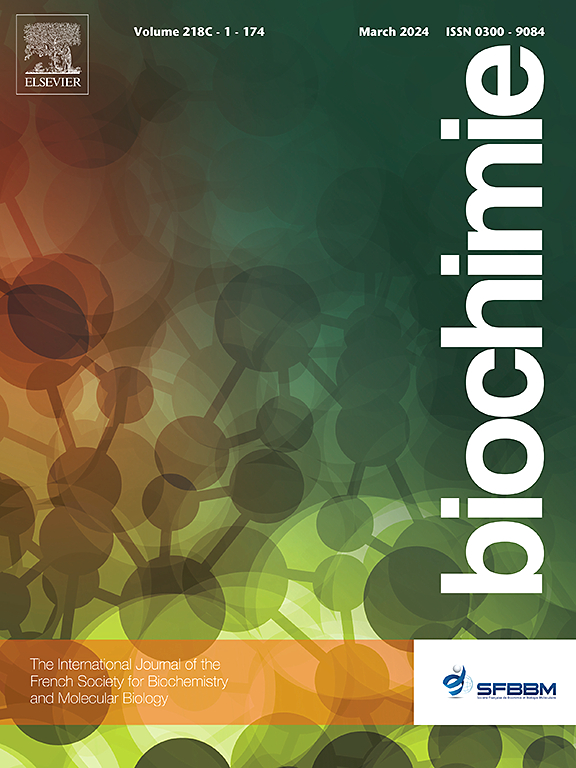Enhancing amplification efficiency and reducing molecular diagnostic reaction time through rational design of T4 gp32 Variants in recombinase polymerase amplification
IF 3
3区 生物学
Q2 BIOCHEMISTRY & MOLECULAR BIOLOGY
引用次数: 0
Abstract
Recombinase polymerase amplification (RPA) is a prominent isothermal nucleic acid amplification method widely applied in molecular diagnostics. The stability and functionality of the single-stranded DNA-binding protein T4 gene 32 (gp32) crucial for pre-synaptic filament formation and D-loop stabilization, play a key role in determining RPA efficiency. In this study, V62C/T80C and Y186R mutants with improved performance were screened by rational disulfide bond construction and virtual saturation mutagenesis, respectively. The structural changes in V62C/T80C and the altered ssDNA-binding capacity in Y186R both contribute to RPA amplification by enhancing the formation of UvsX-ssDNA presynaptic filaments and stabilizing the D-loop structure during homologous recombination, respectively. The two mutants each demonstrated unique advantages in the RPA process. V62C/T80C significantly accelerates the amplification process, reducing the RPA reaction time by 47 %, while Y186R showed a 123 % increase in efficiency across the entire amplification cycle. Totally, this study applied a rational strategy on gp32 optimization, shortening RPA reaction times, enhancing the RPA reaction efficiency, and advancing its application in clinical and point-of-care diagnostics.

重组酶扩增中T4 gp32变异体的合理设计提高扩增效率,缩短分子诊断反应时间。
重组酶聚合酶扩增(Recombinase polymerase amplification, RPA)是一种重要的等温核酸扩增方法,广泛应用于分子诊断。单链dna结合蛋白T4基因32 (gp32)的稳定性和功能对突触前丝的形成和d环的稳定至关重要,在决定RPA效率中起着关键作用。本研究分别通过合理二硫键构建和虚拟饱和诱变技术筛选了性能较好的V62C/T80C和Y186R突变体。在同源重组过程中,V62C/T80C的结构变化和Y186R中ssdna结合能力的改变分别通过增强UvsX-ssDNA突触前丝的形成和稳定D-loop结构来促进RPA扩增。这两个突变体在RPA过程中各自表现出独特的优势。V62C/T80C显著加快了扩增过程,将RPA反应时间缩短了47%,而Y186R在整个扩增周期内效率提高了123%。总之,本研究采用了合理的优化gp32策略,缩短了RPA反应时间,提高了RPA反应效率,推进了其在临床和护理点诊断中的应用。
本文章由计算机程序翻译,如有差异,请以英文原文为准。
求助全文
约1分钟内获得全文
求助全文
来源期刊

Biochimie
生物-生化与分子生物学
CiteScore
7.20
自引率
2.60%
发文量
219
审稿时长
40 days
期刊介绍:
Biochimie publishes original research articles, short communications, review articles, graphical reviews, mini-reviews, and hypotheses in the broad areas of biology, including biochemistry, enzymology, molecular and cell biology, metabolic regulation, genetics, immunology, microbiology, structural biology, genomics, proteomics, and molecular mechanisms of disease. Biochimie publishes exclusively in English.
Articles are subject to peer review, and must satisfy the requirements of originality, high scientific integrity and general interest to a broad range of readers. Submissions that are judged to be of sound scientific and technical quality but do not fully satisfy the requirements for publication in Biochimie may benefit from a transfer service to a more suitable journal within the same subject area.
 求助内容:
求助内容: 应助结果提醒方式:
应助结果提醒方式:


